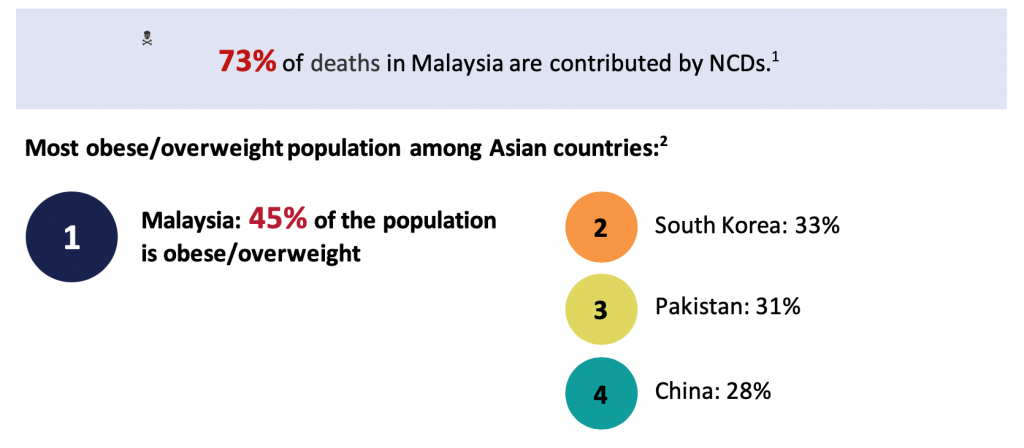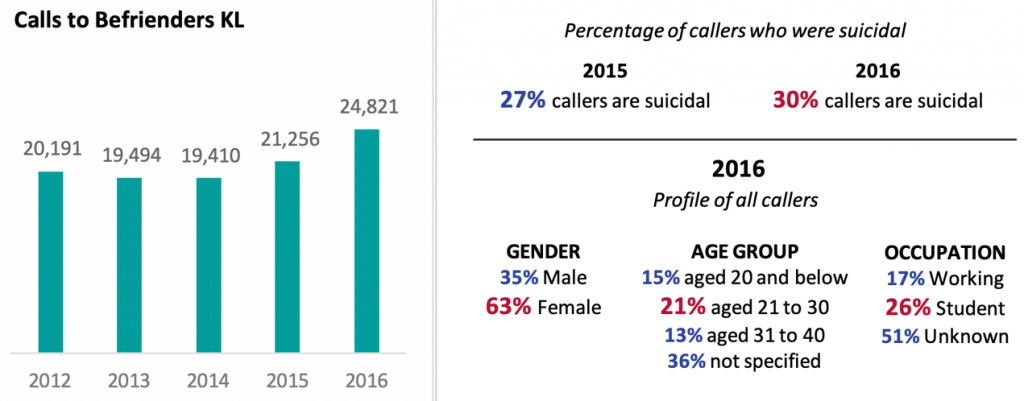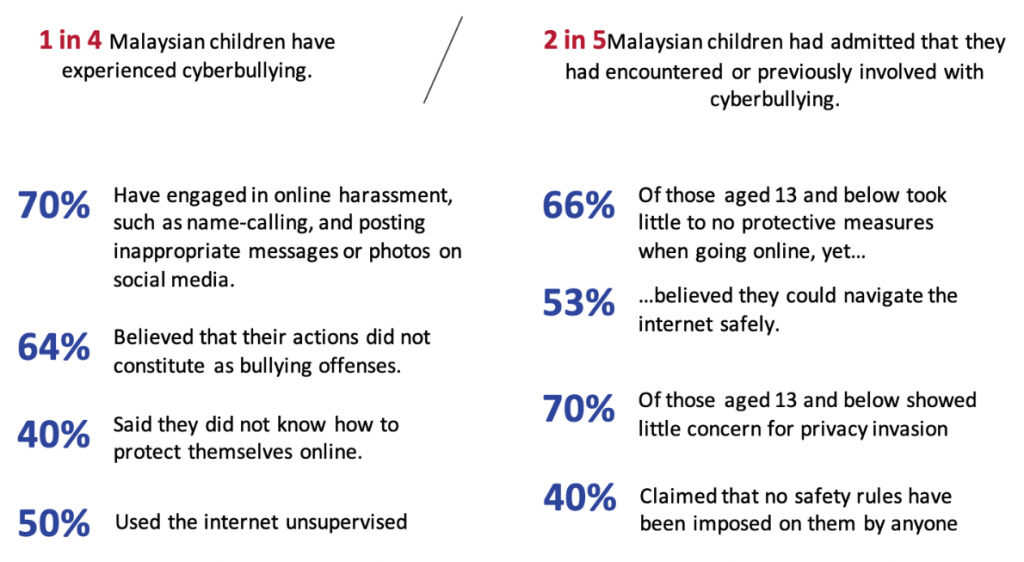Malaysia Population Research Hub

The life expectancy of Malaysians has increased from 71.2 in 1991 to 74.7 in 2016, much of this attributed to greater access to improving healthcare. Nevertheless, modern lifestyles have exacerbated certain diseases to a higher degree, compared to decades before. Non-communicable diseases (NCD) such as diabetes, hypercholesterolaemia and hypertension have contributed to an estimated 73% of total deaths in Malaysia.
Compared to other countries, Malaysia has one of the highest obese or overweight population.

The Prevalence of Non-Communicable Diseases in Malaysia
Source: (1) National Health Morbidity Survey 2015; (2) The Lancet, 2016
(According to WHO, the nationwide prevalence for obesity is 17.7%, higher than global prevalence at 13.0% in year 2015, while those who are categorised as overweight make up 30%. It was also found that obesity is prevalent among Malaysian homemakers who are usually women, at a rate of 23.7%.). A high proportion of Malaysians are found to have undiagnosed NCD risk factors. This results in late diagnosis, which leads to an emergence of other diseases, contributing to the increasing incidences of NCDs.
Psychiatric morbidity is rising and worrying, particularly among youths

Prevalence of Psychiatric Morbidity, Malaysia, 1996, 2006, and 2015
Source: National Health Morbidity Survey 1996, 2006, 2015
Mental health problems have become more prevalent today than it was 20 years ago.(Mental health problems have risen to almost three-folds from 10.7% in 1996 to 29.2% in 2015, among those aged 16 years and above.) There are increasingly more people today, faced with mental and emotional troubles, reaching out for help.
In particular, suicidal tendencies among those reaching out for help is on an uptrend today, and perhaps more worrying among Malaysians aged 15 to 29 (suicide is the second highest leading cause of death in that age group).
One of the biggest contributors towards the uptrend are modern social ailments brought about by technology, such as isolation from others and cyberbullying.

Prevalence of Psychiatric Morbidity, Malaysia, 1996, 2006, and 2015
Source: National Health Morbidity Survey 1996, 2006, 2015
Modern social ailments contributing to psychiatric morbidity among youths
The integration of technology into our everyday lives has given us access to a wider world, but also introduced wider modern-day social ailments into every family. In particular, the proliferation of the world-wide web among children and youths and the evolving ways they interact with it are making it difficult for parents who are unfamiliar or unable to keep abreast with the changes to educate, monitor, and instil best practices in their children. The unsupervised use has led to children often being the victim or perpetrator of modern-day social ailments, such as cyberbullying and sexting, often without fully understanding the implications of their actions.
Based on statistics from Cybersecurity Malaysia, reported cyberbullying cases have risen from 300 in 2012 to 529 in 2016.
Based on a cyber-safe survey conducted by in 2014, approximately 26% of Malaysian children have experienced cyberbullying, with the highest prevalence in the 13-15 age group. In addition, the survey also revealed that 37% of school going children admitted that they had encountered or previously involved with cyberbullying.

Selected Cyberbullying Statistics among Malaysian School-going Children, 2014
Source: DiGi Cybersafe Survey, 2014
Additionally, 35.3% of adolescents aged between 13-24 years old have been exposed to pornography, whereby 60.8% are from internet sources and about 5% of these adolescents have engaged in phone and cybersex. These modern day ailments have caused rifts in the social fabric of Malaysia, for example, cyberbullying has been linked to increased suicide rates in youths in recent years.